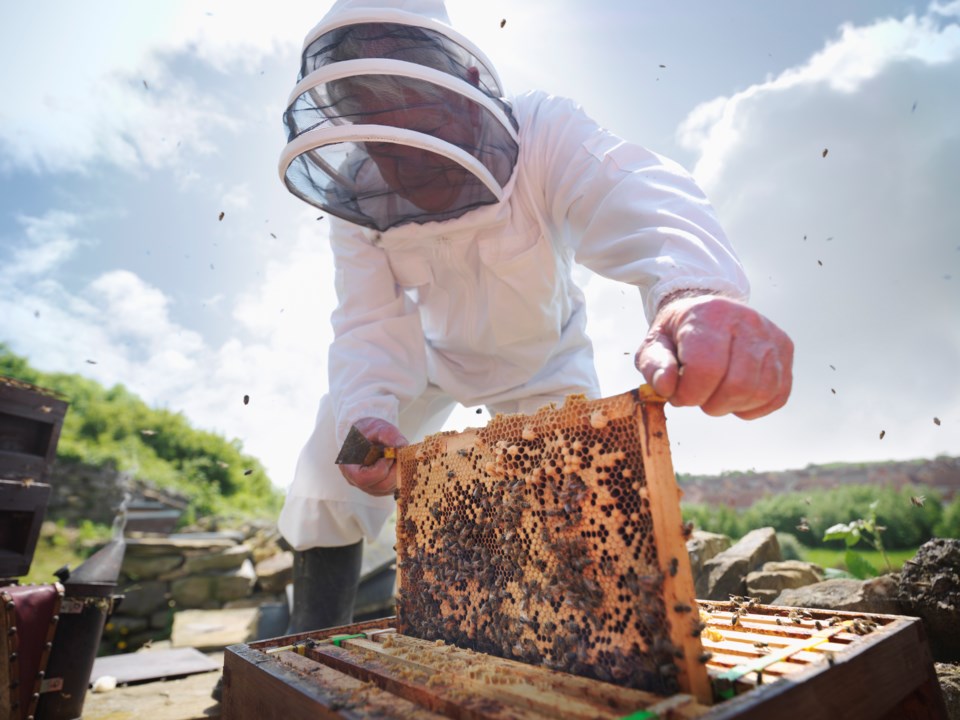American beekeepers support their Canadian counterparts who want to import packages of bees from south of the border.
Currently, only queen bees can be imported from the United States.
Dan Winter, president of the American Beekeeping Federation, said members “would strongly like the Canadian Parliament” to change its mind about that policy.
“It’s been brought to the American Beekeeping Federation’s attention that Canada is importing some packages from some questionable areas,” he told the standing committee on agriculture. “We worry about the commercial and the pollination and how that will affect our industry and our food resources later.”
Winter said bees from the U.S. present a much lower risk than those from other countries where standards aren’t as high.
Canada allows imports of packages from Chile, Australia, New Zealand, Italy and Ukraine.
Winter is concerned about an Asian pest, the Tropilaelaps mite, that has not yet arrived in North America. This mite breeds three times faster than the varroa mite, which is currently the pest of concern.
“Honey production would sink to near nothing because beekeepers would have to treat their colonies constantly to be able to keep up with commercial pollination demands,” he said.
But federal officials also testifying at committee said they haven’t yet seen evidence that would overturn the 1987 decision to halt imports of packaged bees after varroa and tracheal mites were found in the U.S.
The Canadian Food Inspection Agency last conducted a risk assessment in 2013 and reviews new evidence as it becomes available, said Dr. Parthi Muthukumarasamy, executive director of the international programs directorate.
Last year, CFIA formally requested any new scientific information regarding honeybee health in Canada and the U.S. and is now evaluating submissions.
“If sufficient new evidence is available that would warrant a new risk assessment, CFIA will proceed with a new risk assessment,” he said.
He said a package of queen bees poses fewer risks than packages that weigh two or three pounds and contain 8,000 to 12,000 bees. The queens can be more easily inspected.
But Winter said Canada could safely import bees from the U.S.
He said one area of research that could be improved is what happens when honeybees bring pollen back to hives and mix it for bee bread, which they feed to their larvae. The pollen could be contaminated with several agricultural chemicals and, while individual chemicals are studied, the mixes are not.
“I think that’s where a lot of the testing and chemical residue studies have actually fallen short. I don’t think that they’re taking into account that the bees themselves are mixing the chemicals within the hives,” he said.
Ted McKinney, chief executive officer of the National Association of State Departments of Agriculture, said beekeepers managed more than three million colonies for crop pollination and experienced winter losses of 10 to 15 percent before varroa mites were introduced. Today losses are more than 40 percent.
He said three treatments are available to combat varroa mites and that list has not changed in more than 10 years. He said new products are critical.

